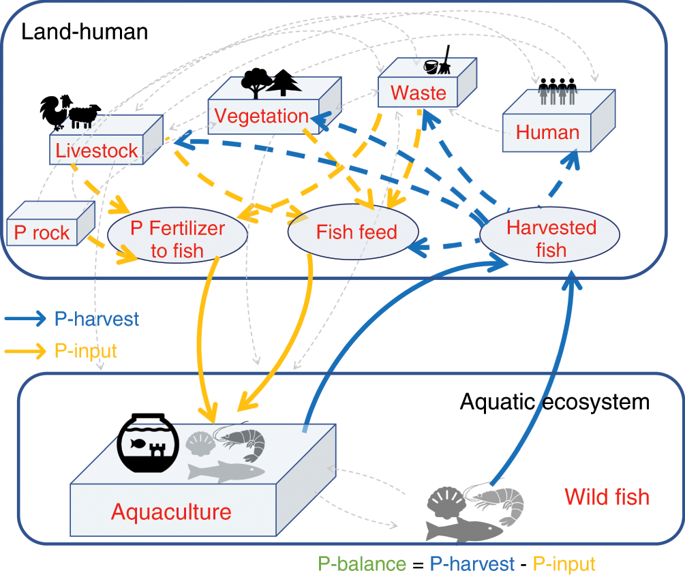当前位置:
X-MOL 学术
›
Nat. Commun.
›
论文详情
Our official English website, www.x-mol.net, welcomes your
feedback! (Note: you will need to create a separate account there.)
The shift of phosphorus transfers in global fisheries and aquaculture.
Nature Communications ( IF 14.7 ) Pub Date : 2020-01-17 , DOI: 10.1038/s41467-019-14242-7 Yuanyuan Huang 1, 2 , Phillipe Ciais 1 , Daniel S Goll 1, 3 , Jordi Sardans 4, 5 , Josep Peñuelas 4, 5 , Fabio Cresto-Aleina 1 , Haicheng Zhang 1, 6
Nature Communications ( IF 14.7 ) Pub Date : 2020-01-17 , DOI: 10.1038/s41467-019-14242-7 Yuanyuan Huang 1, 2 , Phillipe Ciais 1 , Daniel S Goll 1, 3 , Jordi Sardans 4, 5 , Josep Peñuelas 4, 5 , Fabio Cresto-Aleina 1 , Haicheng Zhang 1, 6
Affiliation

|
Global fish production (capture and aquaculture) has increased quickly, which has altered global flows of phosphorus (P). Here we show that in 2016, [Formula: see text] Tg P yr-1 (mean and interquartile range) was applied in aquaculture to increase fish production; while [Formula: see text] Tg P yr-1 was removed from aquatic systems by fish harvesting. Between 1950 and 1986, P from fish production went from aquatic towards the land-human systems. This landward P peaked at 0.54 Tg P yr-1, representing a large but overlooked P flux that might benefit land activities under P scarcity. After 1986, the landward P flux decreased significantly, and became negative around 2004, meaning that humans spend more P to produce fish than harvest P in fish capture. An idealized pathway to return to the balanced anthropogenic P flow would require the mean phosphorus use efficiency (the ratio of harvested to input P) of aquaculture to be increased from a current value of 20% to at least 48% by 2050 - a big challenge.
中文翻译:

全球渔业和水产养殖中磷的转移趋势。
全球鱼类产量(捕获和水产养殖)增长迅速,这改变了全球磷的流量。在这里,我们表明,在2016年,[公式:参见文本] Tg P yr-1(平均数和四分位间距)被应用于水产养殖中以增加鱼类产量;而[公式:参见文本] Tg P yr-1是通过捕捞从水生系统中去除的。在1950年至1986年之间,鱼类生产中的磷从水生向土地-人类系统转移。该陆上磷峰值在0.54 Tg P yr-1处达到峰值,这代表了一个较大但被忽略的磷通量,这可能会使磷稀缺条件下的土地活动受益。1986年之后,陆上磷的通量显着下降,并在2004年左右变为负值,这意味着在捕捞鱼类方面,人类花在生产鱼类上的磷要多于收获磷。
更新日期:2020-01-17
中文翻译:

全球渔业和水产养殖中磷的转移趋势。
全球鱼类产量(捕获和水产养殖)增长迅速,这改变了全球磷的流量。在这里,我们表明,在2016年,[公式:参见文本] Tg P yr-1(平均数和四分位间距)被应用于水产养殖中以增加鱼类产量;而[公式:参见文本] Tg P yr-1是通过捕捞从水生系统中去除的。在1950年至1986年之间,鱼类生产中的磷从水生向土地-人类系统转移。该陆上磷峰值在0.54 Tg P yr-1处达到峰值,这代表了一个较大但被忽略的磷通量,这可能会使磷稀缺条件下的土地活动受益。1986年之后,陆上磷的通量显着下降,并在2004年左右变为负值,这意味着在捕捞鱼类方面,人类花在生产鱼类上的磷要多于收获磷。











































 京公网安备 11010802027423号
京公网安备 11010802027423号